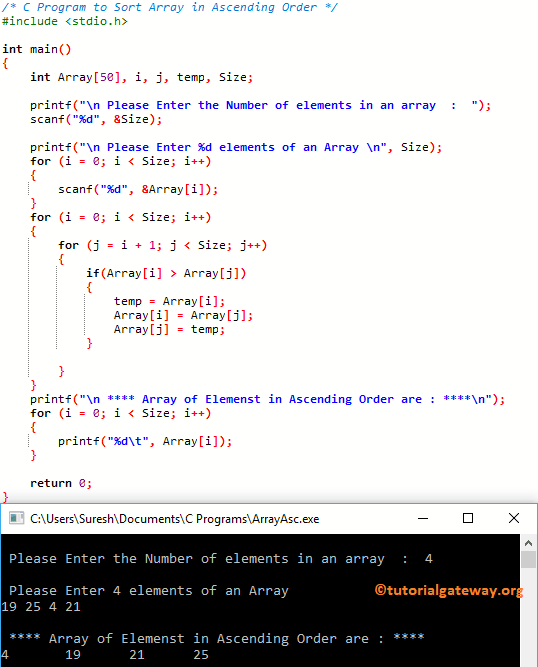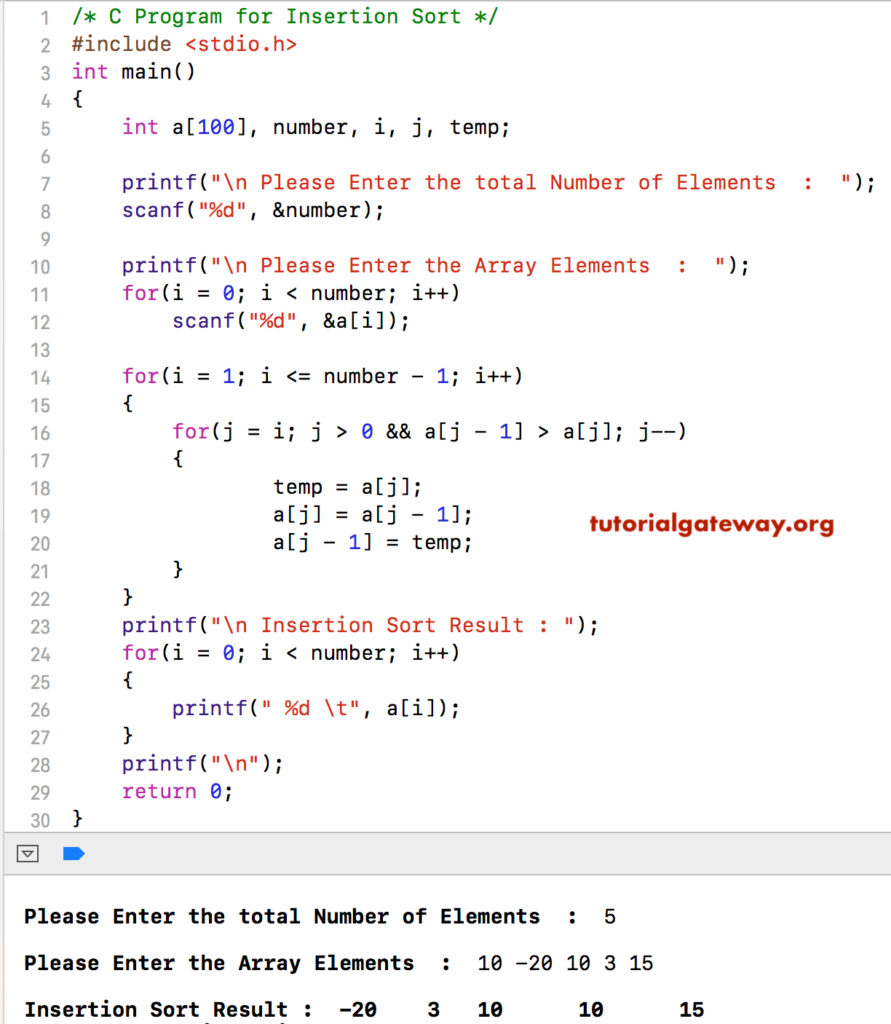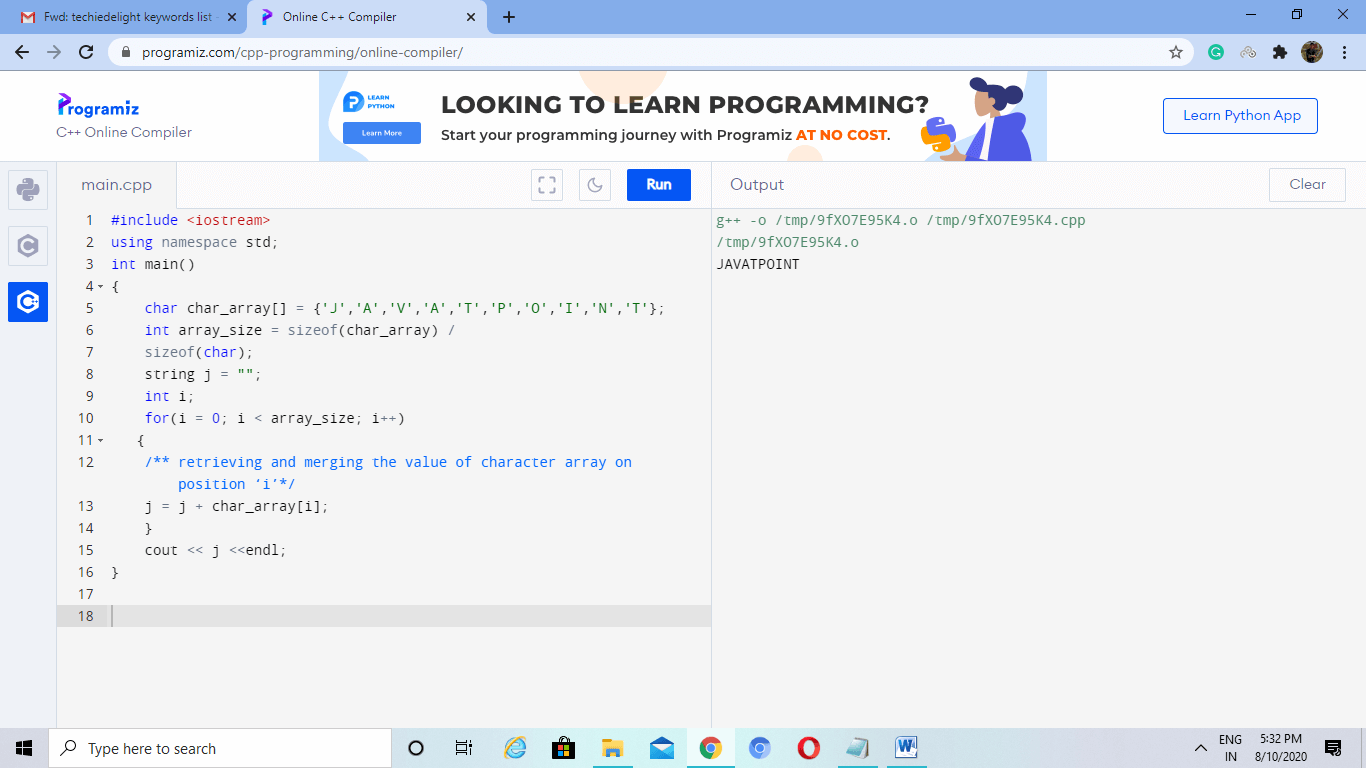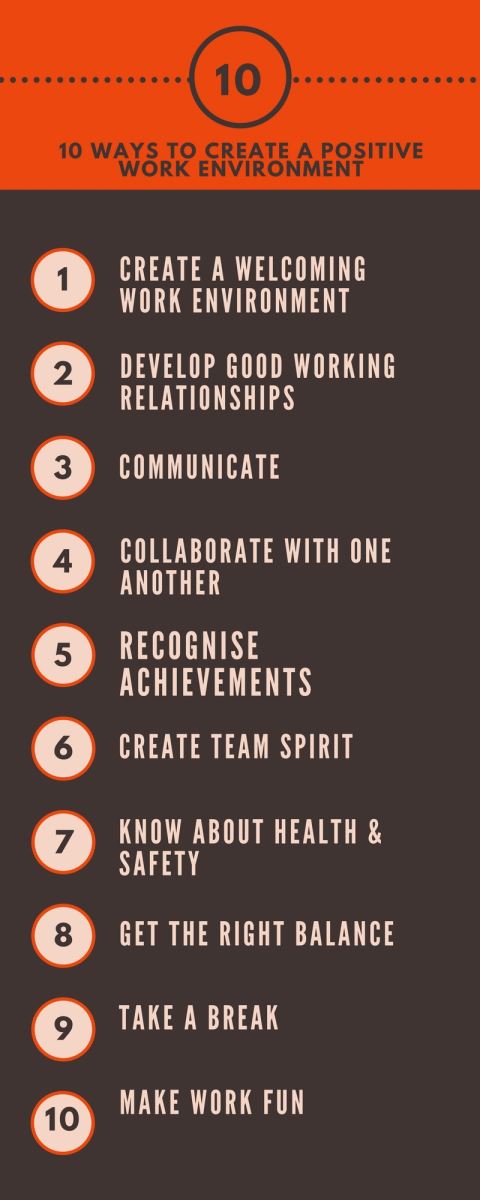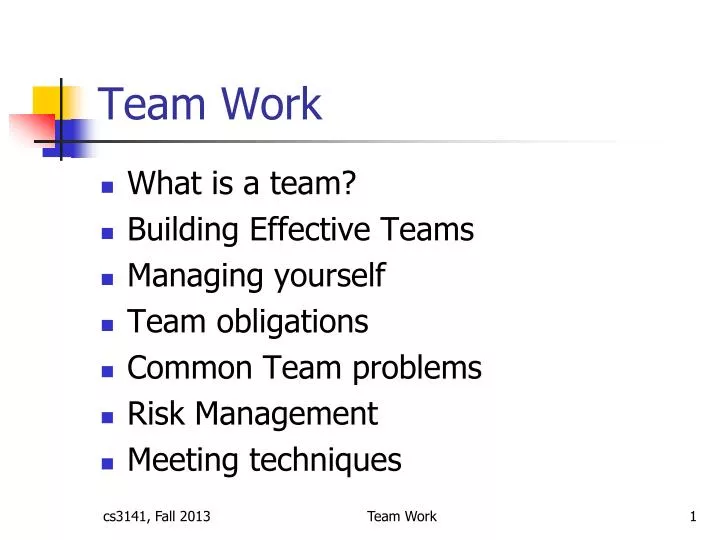Well the factor is, these are all "in place" sorts. That is, we don't create a second object to return the result, shop state, or maintain "partial" results. Although choice type performs somewhat greater when coping with sorted arrays, it performs poorly in comparison to different sorting algorithms corresponding to merge sort. The benchmark reveals that the best, average, and worst complexity of the choice type implementation is O(N²). Package that gives sort() process to type an array in ascending order.
It makes use of Dual-Pivot Quicksort algorithm for sorting. It is a static system that parses an array as a parameter and doesn't return anything. We can invoke it instantly employing the category name. It accepts an array of kind int, float, double, long, char, byte.
Sorting a C# array is a standard operation for programmers. In this text and code examples, you'll discover ways to type an array in C# in ascending order. You can even see methods to type an array in C# in descending order applying the Reverse method.
You can even discover ways to type a partial array or a variety of array elements. The general time complexity of counting type is Θ(N+K) in all cases. Function is significant to all the sorting algorithms within the next way. It is used each time two gadgets are discovered to be out of order. This doesn't imply that the merchandise involves its remaining resting place within the array.
It simply signifies that for the moment, the gadgets have been reordered so we'll catch up with to having a sorted array. To variety an array in Java in descending order, it's a must to make use of the reverseOrder() system from the Collections class. The reverseOrder() system doesn't parse the array. Instead, it is going to merely reverse the pure ordering of the array. It signifies that you're going to first use the variety array in Java to variety it in ascending order after which reverse it with the reverseOrder() method. One other factor value noting is that the Collections.reverseOrder() doesn't help primitive type.
Hence, you need to use "Integer" rather than "int" to outline the integer information variety array. You can see it in motion within the under example, the place you need to use the identical integer array you used until now and variety it in descending order. Sorting in c# is the method of arranging the contents of a set in a selected order. A assortment could be an array, an inventory or every different information group.
The assortment could comprise components of straightforward varieties in addition to complicated types. A elementary kind could be a set of integers, strings, floating-point numbers, etc. A complicated kind could be a set of objects of user-defined varieties resembling Employee, Student, etc. Complex varieties are greater than regularly nested, which means the objects could have a quantity of attributes. Here we'll create an array of integer components then we type the weather of the array in ascending order applying the Sort() approach to Array class.
The commonplace answer to in-place type an array in C# is utilizing the Array.Sort() method. It takes a comparator to match two components and decide which component need to seem first within the ultimate sorted array. For sorting in descending order, we will grant a customized assessment perform that reverses the default type order. Sorting an array of strings is like sorting an array of int. The Array.Sort way takes an enter worth of an array of strings.
The following code instance exhibits easy methods to sort an array of strings in ascending and descending orders making use of C#. Let's confirm that the choice sort algorithm has a time complexity of O(N²) through the use of efficiency benchmarks to check how lengthy the algorithm takes to sort an array. Sorting is probably some of the most typical issues that programmers clear up at the same time constructing applications. Selection sort is likely certainly considered one of many algorithms that we will use to sort components in an array. We are going to discover ways to implement choice sort in C# and analyze how the algorithm performs when sorting arrays of varied sizes. In C#, sorting an inventory of straightforward varieties like int, double, char, string, etc. is straightforward.
For example, if we've now now an inventory of integers as proven below. In the next program, we've now now outlined an array of kind integer. After that, we've now now invoked the sort() approach to the Arrays class and parses the array to be sort. For printing the sorted array, we've now now used for loop. Here we sorted the weather of array "intArr" within the ascending order employing the Sort() approach to Array class after which print the sorted array on the console screen. To type an array of integers in growing order in C#, name Array.Sort() methodology and cross the array as argument.
The components within the array are sorted in ascending order. The LINQ's Enumerable.OrderByDescending system types components of a sequence in descending order. This system avoids modifications to the unique array and returns a brand new sorted array as an alternative in accordance with the required comparator.
This is the popular process for out-of-place sorting in C#. We will use the 2 strategies Array.sort() and Array.Reverse() collectively to type an array in descending order. The Array.Sort() process types the array in ascending order.
We will reverse the array applying Array.Reverse() methodology to type our array in descending order. There are a number of overloads of those methods. The right syntax to make use of these techniques is as follows. To type an array in descending order, we will use Sort.Reverse method. This methodology additionally takes an array as an enter and types its parts in descending order.
The following code snippet reverses an array. The easiest procedure to type an array in C# is employing Array.Sort method. The Array.Sort procedure takes a one-dimensional array as an enter and types the array parts within the ascending order. There is a few factor generally recognized because the Two Finger Algorithm that helps us merge two sorted arrays together.
Using this subroutine and calling the merge type operate on the array halves recursively will give us the ultimate sorted array we're watching for. Quick type achieves this by altering the order of components inside the given array. Compare this with the merge type algorithm which creates 2 arrays, every size n/2, in every operate call. Write a program, which checks whether or not there's a subset of given array of N elements, which has a sum S.
The numbers N, S and the array values are examine from the console. If all numbers are positive, there's a a lot speedier algorithm. We sum all numbers from left to the right, ranging from zero. If the present sum turns into larger than S within the course of the summation, we take away the leftmost quantity within the sequence and we subtract it from the sum. If the present sum continues to be larger than S, we take away the subsequent leftmost quantity and do this until the present sum turns into smaller than S. When the sum turns into smaller than S we add the subsequent quantity on right.
If we discover a sum equal to S, we print the sum and the sequence to the console. So this answer makes use of simply with one scan by using the weather within the array. A scalar variable can maintain simply one merchandise at a time. These gadgets are referred to as parts of the array. Each factor should be referred to by an index.
We shouldn't use choice type in a sorted array, because it could nonetheless carry out O(N²) comparisons. In such a scenario, a sorting algorithm resembling bubble type would carry out these comparisons in a single iteration. You can use LINQ OrderByDescending methodology to reverse an array. OrderByDescending methodology types parts from excessive to low. The following C# supply code exhibits how one can type an array in descending order through the use of LINQ OrderByDescending.
We will convert it to an array applying the ToArray() method. In this code example, we discovered methods to make use of the Array.Sort procedure to type a one-dimensional array of integers and strings in C#. The best, worst and typical case time complexity of Heapsort is O. Although heapsort has a greater worse-case complexity than quicksort, a well-implemented quicksort runs speedier in practice.
This is a comparison-based algorithm so it usually is utilized for non-numerical files units insofar as some relation could be outlined over the elements. Counting Sort is a sorting approach dependent on keys between a selected range. It works by counting the variety of objects having distinct key values . Then performing some arithmetic to calculate the situation of every object within the output sequence.
This will be without problems proved by drawing a choice tree diagram. Write a program, which types an array of integer components applying a "merge sort" algorithm. Sorting an array means to rearrange its components in an rising order.
How To Sort An Int Array In C Write a program, which types an array utilizing the algorithm "selection sort". There are numerous techniques for working with arrays. These techniques should be utilized for retrieving, modifying, sorting, copying, looking data. These techniques that we use are static techniques of the Array class or member techniques of the array objects. The trick in Shell Sort is to start off out up swapping components which might be additional apart.
While this could occasionally eliminate just one inversion sometimes, commonly many extra inversions are eliminated with intervening elements. Shell Sort considers the subsequences of parts spaced okay parts apart. There are okay such sequences establishing at positions zero as a result of k-1 within the array. In these sorts, parts okay positions aside are exchanged, eliminating between 1 and 2(k-1)+1 inversions.
This seriously is not meant to be a complete reference at all. For a full theoretical treatment, we suggest the excellent textbook by Niklaus Wirth , who invented the Pascal language. (We have additionally tailored some examples from Thomas W. Christopher's animated sorting algorithms page. To type the subarray, the Arrays class supplies the static process named sort().
It types the required selection of the array into ascending order. We additionally can kind the array of kind long, double, float, char, byte, etc. In the above program, we created a Sample class that incorporates the Main() method.
In the Main() method, we created an array of integers that accommodates 5 elements. Subarray is nothing however section of a much greater array. For instance, if you're taking your ar array from the prior examples, it accommodates ten values. If you type solely some parts as opposed to the complete array, it can be named sorting a subarray. This should be achieved applying the whole syntax of the sort() system and offering the elective parameters from_index and to_index.
When you style a subarray, the remainder of the weather stay unchanged. The under instance makes use of the identical ar array and varieties the subarray of the values from index 1 to 7 at the identical time holding the values at index 0, 8, and 9 unchanged. To be extra precise, they're lists of objects of user-defined classes. Being user-defined, the objects are a mixture of varied primitive types. It is tricky to style a posh record type.
C# compiler expects every complicated class to inherit from the IComparable interface and outline the tactic CompareTo(). This technique incorporates the guidelines on the right way to match the weather of the listing for sorting. Thus, Quicksort has two key processes – choosing the pivot and partitioning the array. The implementations of the algorithm rely upon the choice of the pivot.
It could be both the primary element, or the last, or any random element, or the median of the array. Quicksort follows a divide and conquer strategy. This means, the sorting algorithm selects a pivot component and divides the array dependent on the pivot element. The components smaller than the pivot are positioned earlier than it.
The parts bigger than the pivot are positioned after it. This ensures that the pivot component is sorted. Also, the array is split into two – parts smaller than pivot and parts bigger than the pivot. Next, the algorithm follows the identical strategy for each the arrays. You can type the arrays in ascending order in addition to descending . We can use Array.Sort way for types the weather in a one-dimensional array.

